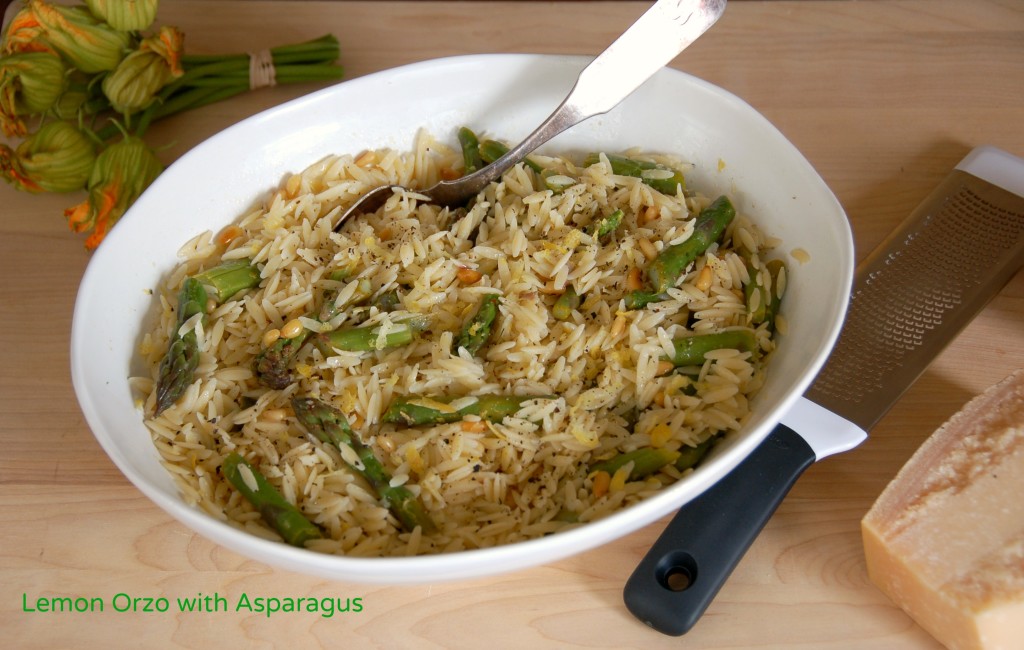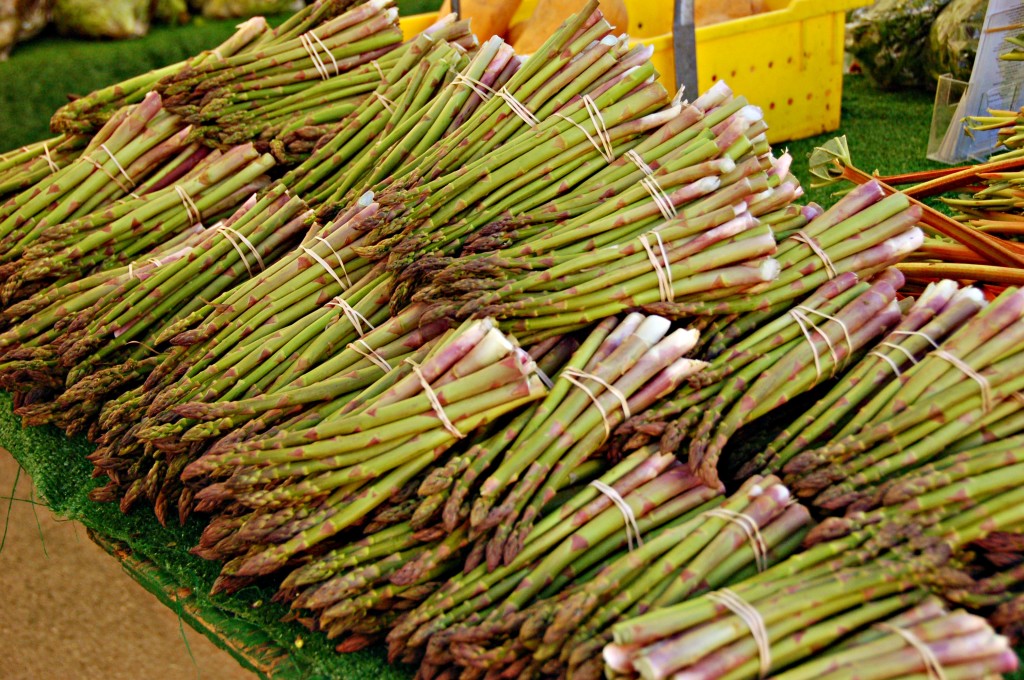My mom returned from Paris a few weeks ago and reported that all the markets, and all the restaurant menus, were full of asparagus. The French get so excited about asparagus season because they don’t expect to see asparagus all year round. In France, you get asparagus in the spring and once they’re gone, they’re gone until next year. Au revoir.
Here, we can buy asparagus in the supermarkets for much of the year. But those asparagus are grown in California, or Mexico or even further afield. There is nothing wrong with that; if you or your kids love asparagus, you are probably happy to eat them all year long. Goodness know they are good for you, rich in vitamins and an especially good source of fiber. Ancient Greeks even thought asparagus cleansed and purified the body. (I think we all know why they thought that, but I will say no more on that subject.) I will admit to buying asparagus at the supermarket in the off-season if I have a hankering for them. Zuzu quite likes them and I will do anything to get my kids to eat vegetables.
But locally grown asparagus are a particular treat. They have much more flavor than the store-bought kind. And while supermarket asparagus have a slightly terrifying uniform appearance, farmers’ market asparagus vary widely in size and shape: from stalk-like to pencil-thin. I personally gravitate toward to the thick ones because I am convinced they have more flavor. I just make sure to snap off the woody ends and peel them if needed.
Whether you buy your asparagus at the supermarket or the farmers’ market, they will last for a few days in the refrigerator if you treat them well. Remember to cover the bottoms with a damp paper towel. The bottoms need to be kept moist. That’s why you sometimes see asparagus displayed standing upright in a shallow pan of water.
When the first farmers’ market asparagus come in, I don’t like to get too cute with them. Grilled asparagus and asparagus vinaigrette are enough to satisfy us. But after a few weeks, we grow bored with those simple preparations. I still want to gorge on local asparagus for as long as they are available — I just come up with more creative ways to use them. Last week I tried my hand at asparagus pesto, made with cooked asparagus, toasted pine nuts, garlic and olive oil puréed in a food processor. I loved the unusual, slightly mineral flavor. I used it to top a white pizza and as a sauce for pasta. I liked it so much that I set aside half of my farmers’ market asparagus from this week to make another batch.
With the rest of the my asparagus, I decided to make a family-friendly side dish for Sunday night dinner. Zuzu was returning from a weekend away at Girl Scout camp and I wanted to treat her to a nice meal after several days of hot dogs and mushy spaghetti. For a first course, I made my husband’s favorite Cold Pea Soup with Mint. The main course was to be a marinated skirt steak — Zuzu’s favorite — so I decided to combine the asparagus with a starch to keep things simple. (I was also making an elaborate rhubarb cream cheese pie with fresh strawberries so I didn’t need too many additional dishes.)
When I am looking to combine a starch with vegetables, orzo — rice-shaped pasta — is my mainstay. The small size of the orzo makes it easy to get a mix of pasta and vegetables in the same bite. I’m sure I should be more adventurous and use pearl barley or farro or some other grain. But orzo is familiar and everyone in the family likes it. I can even put aside some plain orzo for JR to eat. My mom makes a very simple orzo with pine nuts and fresh basil in the summer and it works with everything. I used that dish as my base and added blanched asparagus and lots of lemon juice and lemon zest. The result was a hit with everyone.
Because this orzo can be eaten warm or at room temperature, you can make it ahead of time, thereby simplifying your dinner preparation. It would also be perfect to bring to a summer potluck or picnic because it has no mayonnaise or other ingredient that can spoil. I hope that you are enjoying some local asparagus is your area!
- 1 lb. orzo
- ½ cup pine nuts, lightly toasted in a dry skillet
- 3 cups blanched asparagus, cut into 1-inch pieces
- ½ cup extra-virgin olive oil
- Zest and juice of one lemon
- ½ cup freshly grated Parmesan cheese
- To blanch the asparagus, fill a large deep skillet with water and bring to a boil. Salt the water and drop in the asparagus. Cook the asparagus for 3-5 minutes until just tender. Then remove them from the skillet and immediately place them in a bowl of ice water to stop the cooking. Drain.
- Cook the orzo according to the package directions. Drain.
- Whisk together the lemon juice, lemon zest and olive oil in a small bowl.
- Place the orzo in a large serving bowl and while it is still warm, dress with the lemon juice and olive oil mixture. Toss to coat the orzo with the dressing.
- Add the asparagus pieces and pine nuts and mix well.
- Stir in the grated Parmesan and season well with salt and pepper.
- If not serving immediately, cover and refrigerate. Let orzo come to room temperature prior to serving.








I like asparagus but typically only buy it this time of year when it’s local. This orzo sounds like a great, simple dinner.
I see that you agree with me about the benefits of local asparagus. I hope you give this orzo a try and that it works out for you.